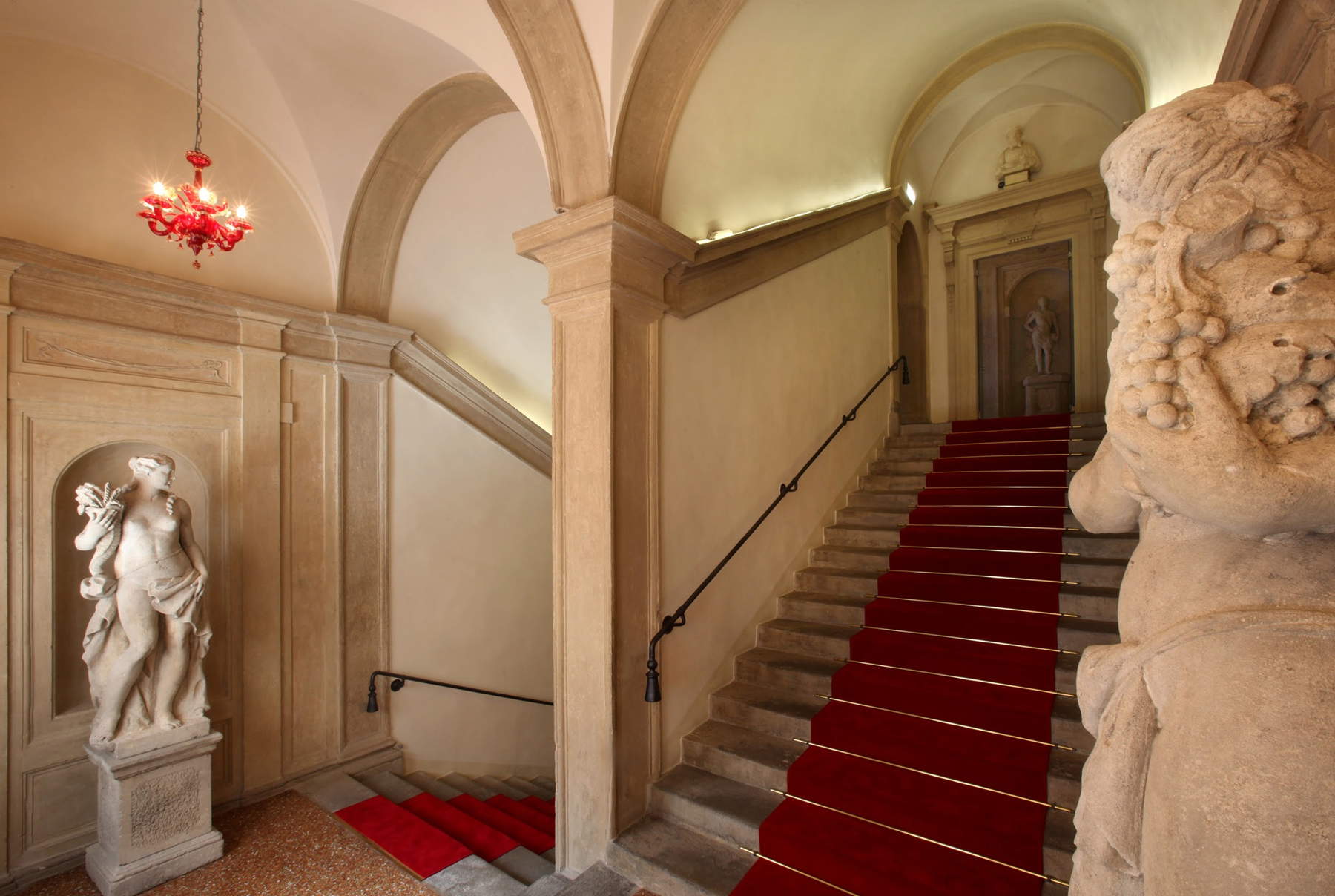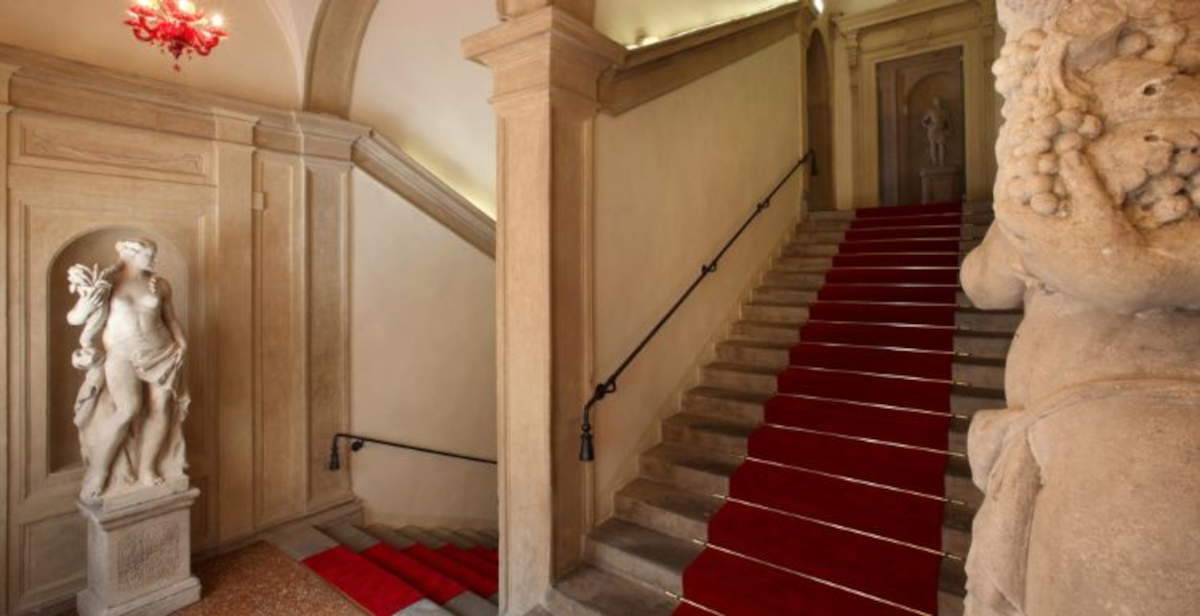From Nov. 14, 2025 to Feb. 15, 2026, Palazzo Fava in Bologna will host the exhibition Michelangelo and Bologna, an exhibition project promoted by the Fondazione Cassa di Risparmio in Bologna and included in the cultural project Genus Bononiae, produced by Opera Laboratori. The initiative, curated by Cristina Acidini, president of the Fondazione Casa Buonarroti and the Accademia delle Arti del Disegno, and Alessandro Cecchi, director of the same foundation, proposes an original focus on the relationship between Michelangelo Buonarroti (Caprese, 1475 - Rome, 1564) and the city, with special attention to his youthful sojourns and Renaissance Bologna. The exhibition opens on the occasion of the 550th anniversary of the master’s birth and will be open for the entire period indicated.
The exhibition is developed through an articulated itinerary that combines original works, historical casts, drawings, ancient books and archival documents, with the aim of offering an analytical and in-depth view of Michelangelo’s artistic evolution and his connection with the Emilian city. The exhibition itinerary begins in Florence, the cradle of the Renaissance, where the young artist received his early training under the influence of the cultural context promoted by Lorenzo the Magnificent. At this stage, the viewer can confront works such as the Madonna of the Staircase, sculpted by Michelangelo as a teenager and on loan from the Casa Buonarroti Foundation, and an original drawing particularly important for the Florentine period. The tour also highlights the influence of masters such as Jacopo della Quercia, through casts of the Tondo Ludovisi and a Madonna and Child from the Oratory of San Bernardino in Siena.
The journey continues with Michelangelo’s arrival in Bologna in 1494, following the expulsion of the Medici from Florence. During this first stay, the artist received a commission to complete some sculptures for theArk of San Domenico. The works created during this period, including the statues of St. Proculus, theAngel Holding the Candelabra and St. Petronius, document Michelangelo’s early artistic maturity and his first confrontation with Emilian sculpture. The exhibition contextualizes the works within the Bologna of the Bentivoglio, a family that transformed the city into a vibrant political and cultural center between the 15th and 16th centuries. Documents, portraits and period objects help reconstruct the environment in which Michelangelo worked, highlighting the city’s impact on his artistic development and early relationship with power.

The last section of the exhibition is devoted to his second stay in Bologna, between 1506 and 1508, a period when Michelangelo was called upon by Pope Julius II to create a colossal bronze statue destined for the facade of San Petronio, a work now lost. The phase documents the complexity of the relationship between the artist and the pontiff, a prelude to the creation of the Sistine Chapel vault. The exhibition also displays several autograph letters from Michelangelo’s correspondence, which testify to his relationship with Julius II, his family and the political and health context of the time, including the spread of the plague. In addition, an original drawing, a study for the tomb of Julius II, can be seen, providing further details on the artist’s creative journey.
Alongside the main exhibition, a program of educational activities is designed for different audiences, with the aim of encouraging a direct and in-depth encounter with Michelangelo’s works. The initiative has received the patronage of the Emilia-Romagna Region, the Municipality of Bologna, the Alma Mater Studiorum - University of Bologna and the Academy of Fine Arts of Bologna.
Before the opening, two musical events will anticipate the exhibition: the Musical Frescoes, conversations-concerts in collaboration with the Musica Insieme Foundation. On Oct. 8 at 6:30 p.m., Deh dimmi Amor will feature madrigals, songs and ballets from the Renaissance with the Chamber Choir Euridice and the Ensemble of Ancient Instruments “Circe,” introduced by Nicola Badolato. On Oct. 22, also at 6:30 p.m., Gli occhi miei vaghi delle cose belle will interweave Michelangelo’s sonnets with Benjamin Britten’s Seven Sonnets op. 22 and Franz Liszt’s Il Pensieroso, performed by tenor Mark Milhofer and pianist Marco Scolastra, with a prologue by Diego Tripodi.
The project is enriched by the presence of works by other protagonists of the Italian Renaissance, including Ercole de’ Roberti, Francesco Francia, Lorenzo Costa and Amico Aspertini, thus presenting an articulate picture of the artistic dynamics of the time and the links between great masters.
 |
| Michelangelo in Bologna: the genius on display at Palazzo Fava |
Warning: the translation into English of the original Italian article was created using automatic tools. We undertake to review all articles, but we do not guarantee the total absence of inaccuracies in the translation due to the program. You can find the original by clicking on the ITA button. If you find any mistake,please contact us.